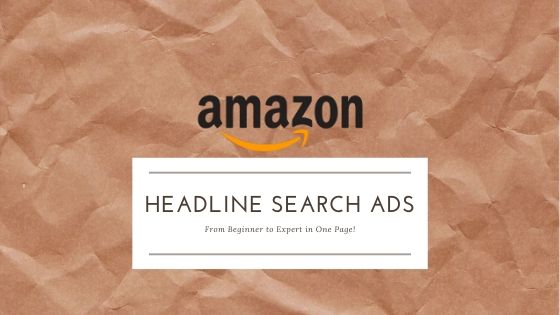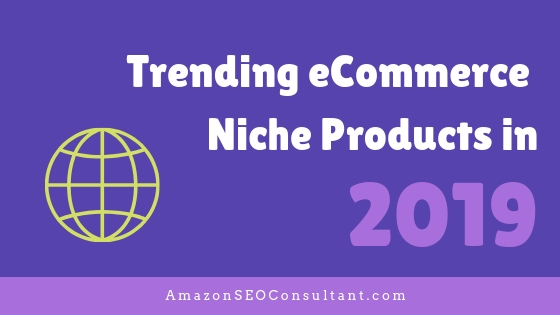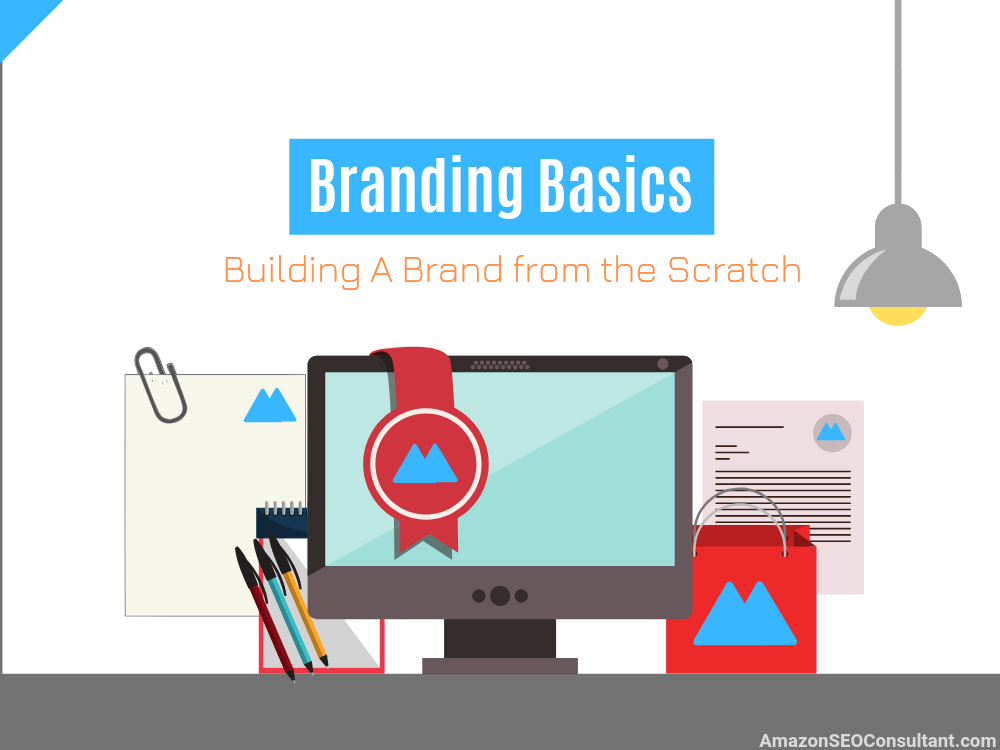
You want them to buy from you.
You want them to notice you.
You want them to talk about you.
But have you done enough to make sure they know who you are?
Probably not. Most businesses don’t take branding seriously.
Is it time to give up already? No way!
Building a brand is one business investment that will rarely let you down. It’s also never too late to start doing it. The problem is – most of us don’t really know where to start. Hiring branding experts and marketing gurus helps – but not everyone can afford it (and, honestly, it’s a little difficult to spare that kinda cash when you’re starting out).
But that’s another story. In this post, we’ll be discussing what branding is, why your business needs it and what the basics of business branding are – without any unnecessary business jargon.
What Is Branding?
This is where much of the confusion begins.
Three points to note here:
Branding Is Never an Accident
You can’t find brand that just ‘happen’. It takes a lot of work for a business to become a brand – and that’s where the value of branding comes from.
Branding Is More Than Just Marketing
You can market a brand, but you can’t let marketing be the brand.
In an ideal world, your branding efforts should be good enough to create a lasting impact. You don’t want people to forget all about your brand the moment you move out of their sight.
Branding Is Bigger Than Your Products, Services and Personnel
Apple has a lot to do with iPhones and Steve Jobs. But Apple isn’t just about iPhones or Steve Jobs.
When you build a brand, you make a promise to the customer – a promise that goes beyond products, services and people. If I buy a pair of shoes from you, I want to be assured that it’s the right decision. This involves you telling me:
- The shoes are great. No problems with the product.
- If you need, we’re here to solve your problems.
- You’re buying from us – you’ve got nothing to worry about.
See how the branding works on all levels – quality, reliability and trust . It’s really that straightforward. All great brands do it – and so should you.
But Why? Do I Really Need Branding At This Stage?
Yes, you probably do.
So, let’s get the common ‘I can’t afford branding at this stage’ misconception out of the way.
Good.
Here’s Why Your Business Needs Branding:
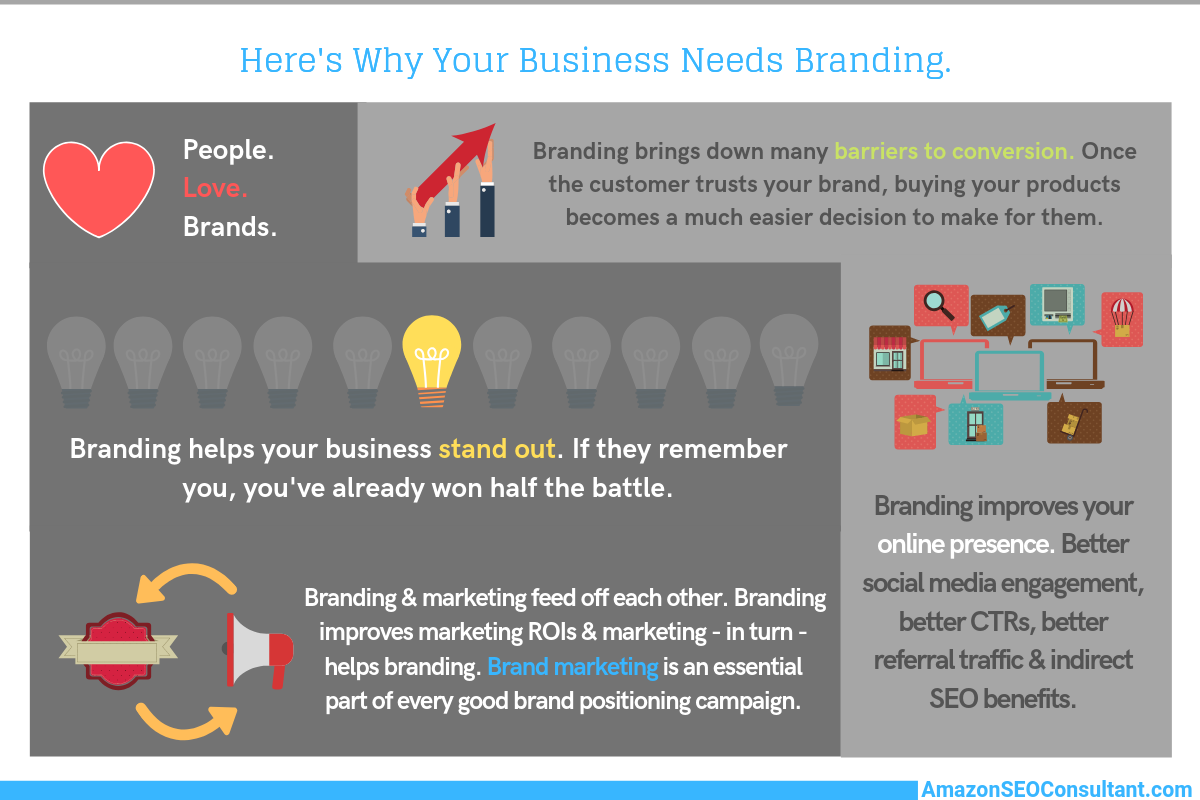
- Branding helps you stand out. Nobody wants to buy from a ‘nobody’. I know it sounds like a truism – I also know that most young/small businesses DON’T do anything about branding despite being aware of its importance!
- People love brands. Even if your brand is a million miles away from being ‘recognisable’, just creating a perception of branding helps. Here’s a gem of a stat: 60% of retail customers prefer to make repeat purchases (= brand loyalty). 90% of such customers admit to being influenced by branding. (Source).
- Here’s something I’ve found the hard way working with hundreds of Amazon sellers of all sizes, operating in pretty much every competitive niche you can think of. Good branding (and good ‘perception’) tears down, destroys, literally annihilates many conversion barriers. If they know and trust your brand, here’s what happens: They don’t need to be convinced (takes out the copywriting barriers), they don’t need to be assured (takes out the trust barrier) and they don’t need to be provoked (takes down the call to action barrier). Instead of “Maybe I should look around if there’s something better”, you push your customers towards “Take my money, already”. To me, that is the Best. Thing. Ever.
- Branding = online gold. Google loves brands – because people love brands. Brands get higher organic rankings, better click-through rates, more social media engagement and best ROIs on ads. Brands need fewer backlinks to rank (and they get way more than you do without even trying). Their domain authority is through the roof – they’ve got it all figured out. It’s unreasonable, even unfair. But that’s how it is. If you want to clock better organic rankings, you need to work on your brand. This applies for all sales channels including e-commerce, especially Amazon. If you’ve got a brand that sells, you get better engagement, higher CTR and more positive reviews. You tick most boxes required to rank higher in Amazon. This is something that we use incredibly effectively in our Amazon product ranking offerings. To know more about how we’ve ranked hundreds of products using home-grown, result-oriented processes, view our case studies here.
- Branding → Marketing → Branding. It’s a cycle. You market a brand and eventually the brand markets for you. Branding helps you get better ROIs on marketing campaigns – a dream come true for every marketer.
To sum it up, branding helps new customers find you (inbound flow > outbound marketing), makes people return to you again and again, pushes your online presence up a few notches and, in general, boosts your bottom line in every way imaginable.
How to Create a Brand from the Scratch?
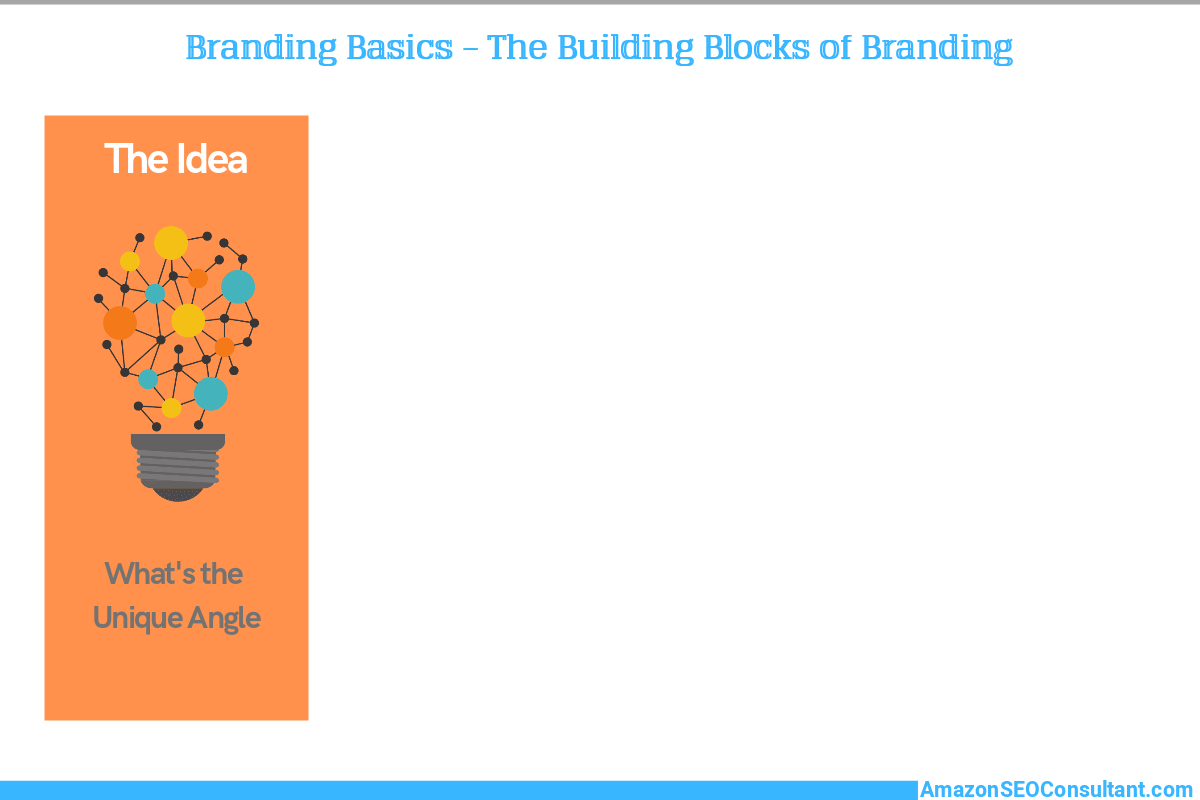
Before we get the basics of creating a brand, let me clarify another misconception:
To build a brand from the ground-up means creating an eco-system of ideas, values, vision and identity. Let’s now see how these building blocks of branding work.
1. The Idea
Alright, so what’s the point of your business?
Why are you doing what you’re doing?
Ideally, you are already aware of what the driving force is for your business. And, please, don’t be too hard on yourself – not every business needs to disrupt the marketplace. You don’t always have to invent stuff – just doing the same thing better can be a great idea in itself.
- What makes your business unique? How do you separate yourself from others (assuming dozens of other businesses are doing the same thing)?
- What do your products bring to the table? New features? Better performance? Value for money? What’s the story here?
- Have you identified opportunities in the market? Price gaps? Availability gaps? Performance gaps? How does your business make the most of these?
Ideas Drive Branding: An Example

Off the top of my head, this is just about the best example of a home-grown idea making it big as a brand.
I first stumbled upon Beer Cap Maps on the Shut up & Take My Money subreddit. I loved what I saw and bookmarked the site right away.
The idea behind their business is creating amazing wall-art, hang-pieces and gift items using beer caps. Their simple, straightforward, message-driven branding immediately tells you what they are all about. No confusion, no gimmicks.
2. The Vision
Another field many small businesses have no clue about.
I can personally relate to this. I’ve been an entrepreneur for some years now, founding companies that now form a perfect digital marketing umbrella. But when I started out – I probably didn’t have this in mind. All I wanted to do was keep doing what I love. Now I know where I want my businesses to be in the 2, 5 and even 10 years.
Having a vision feeds your branding. It may not be that important to your customers – but it’s extremely important to you.
Ask yourself these questions real quick, you’ll get an idea:
- How do I want to achieve the goals set by the business idea?
- How do I communicate to others my plans for the future? What does it mean for the business idea?
- If the idea changes, how does it affect my customers?
- What’s the futuristic take? Is my business flexible enough to adapt?
How the Vision Defines Brands: An Example
Here’s a great example of how vision helps define the brand.
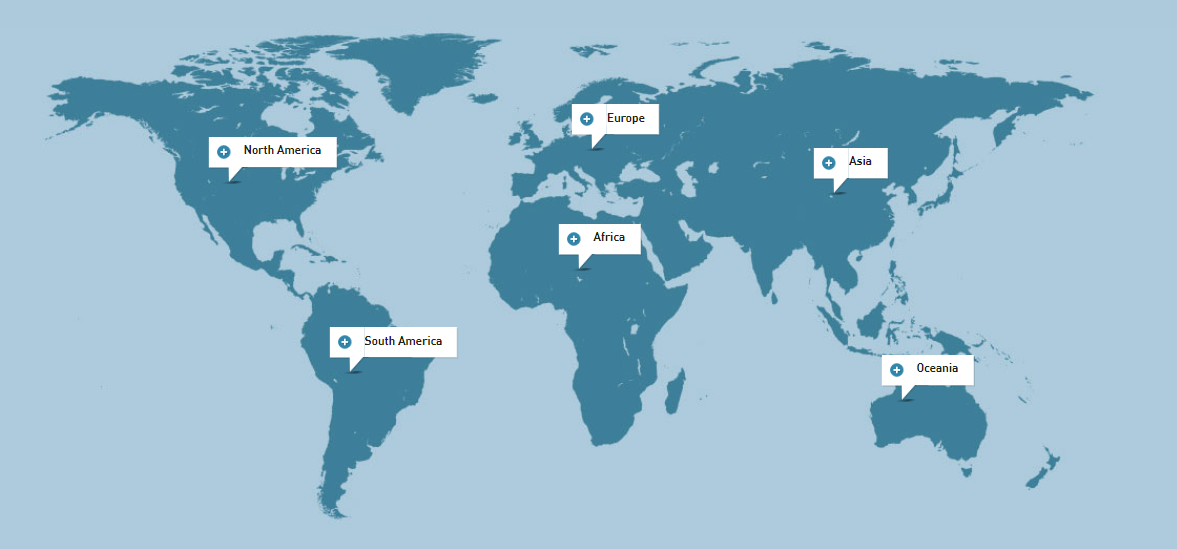
The Bill & Melinda Gates Foundation (needs no introduction, really) may be a charity organisation, but they do take their branding seriously. Take a look at this simple, interactive map they use as a branding tool. It tells us what they have done, what they are doing and what they want to do next.
Not every business needs to shove their vision in the customer’s face, though. You just need to make sure that you know what it is.
3. The Identity
Branding is essentially an intangible thing.
The identity makes it real.
It’s all about giving your brand a personality – something people can instantly recognise.
Identity Creation and Branding: An Example
If you are selling physical products, the packaging gives you a wonderful canvas to establish a strong branding identity.
Take this creative packaging idea floated by the best-in-the-business: Nike.
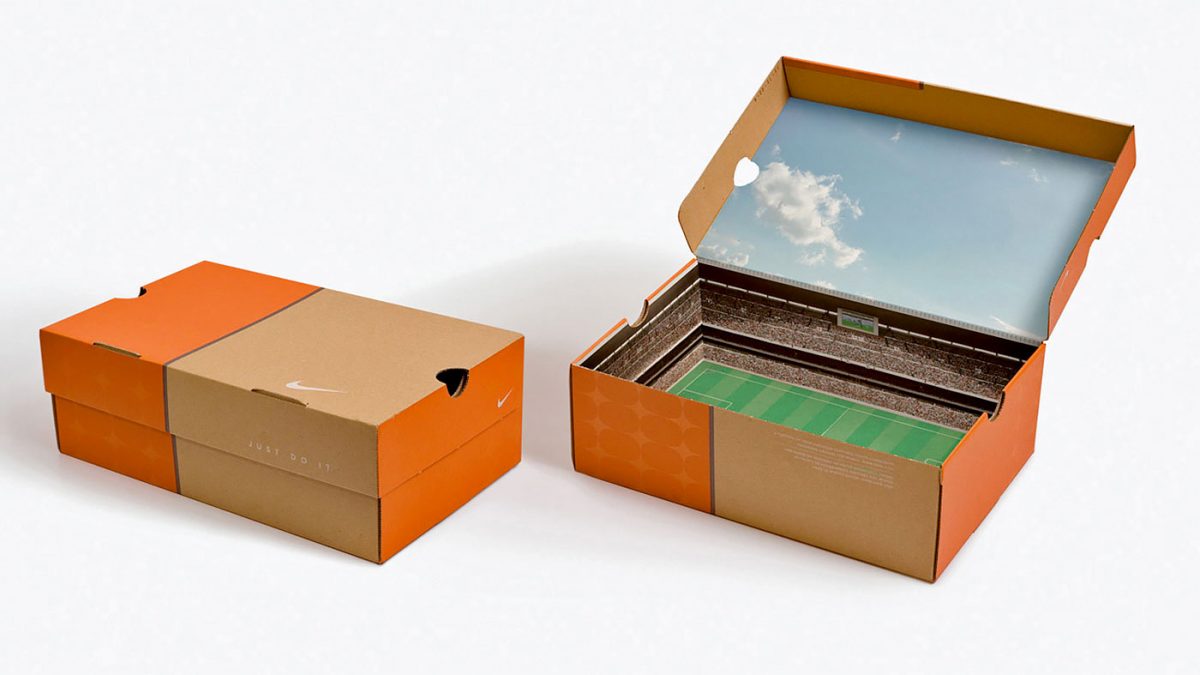
Nike doesn’t really need to talk about their quality anymore – we all know they make great shoes. This packaging goes beyond that – it packs the pair of shoes into a box that looks like a full-blown football arena. If you’re buying football shoes, you can instantly relate to this: it’s a legit gateway to your dreams!
Here are some basic requirements that the brand identity needs to fulfil:
Consistency

Stay consistent across every medium/channel you can think of.
This applies especially to the visual aspects of your branding. From the logo to social media headers, the way your brand ‘appears’ should be unique, recognisable and consistent.
If you’re selling on Amazon, the images and copywriting style you use should be similar to the ones you’re using on other channels. Of course, you don’t want to sacrifice rankings in the process – so be careful not to go overboard with branding where it doesn’t matter much.
Speaking of rankings, here’s how we – at AmazonSEOConsultant – achieve consistently high Amazon rankings for products across categories and regions. Our processes are customised to fit your branding mission with an aim to explode sales. If you feel like this is something your products could benefit from, you will find more information on how we are able to boost the rank and profits of any Amazon product, as well as some example pricing packages here.
Flexibility
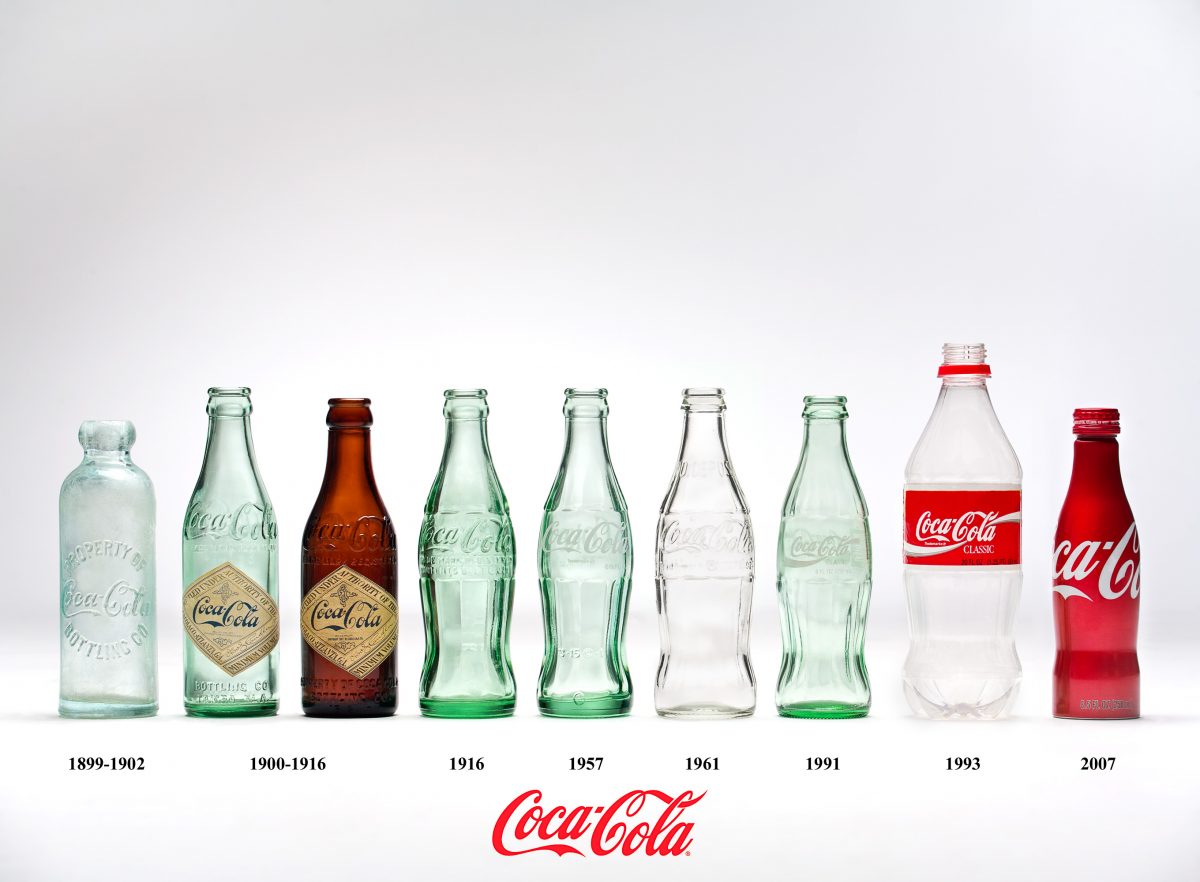
As a business, you can’t afford to be rigid. The image above show how the Coke bottle has evolved over decades.
Just like business models, branding ideas need to be flexible. This is something that you need to think about before you actually get on with brand positioning.
Connection with Products/Services
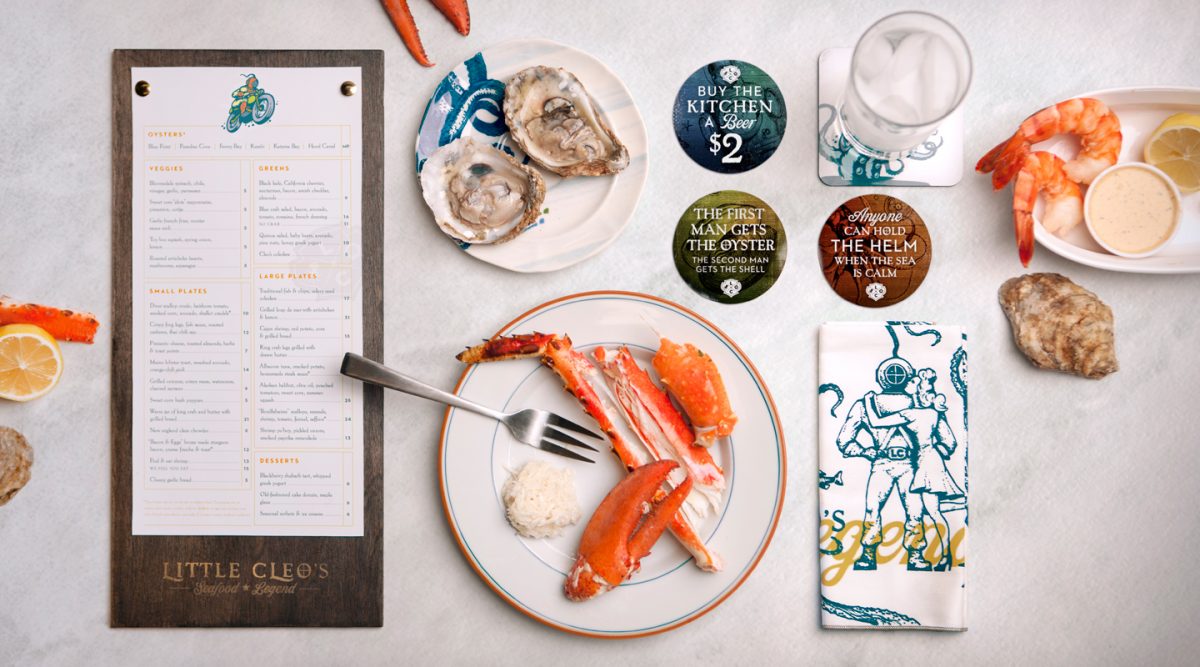
Branding should always be a reminder of what your business is good at.
It makes no sense to create great looking branding materials that don’t really establish a connection with your products/services. The image above shows a branding campaign for a seafood restaurant. Notice how each detail is subtly connected to seafood and other menu items.
4. Values
Unfortunately, ‘values’ and ‘ethics’ are something new businesses don’t think much about.
I can’t tell you how many businesses we’ve come across that had absolutely no idea what they stand for. A common way to deal with these roadblocks is to create a generic statement of values and ethics – a big mistake.

Part I: Your Promise to the Customer
If you’re sourcing fair trade ingredients from around the world and selling on Amazon, make sure people know about it.
A part of your revenue goes to local charities? Let people know.
If you offer great customer service, let them know that their orders are in safe hands.
Keep it simple, real and relatable. They don’t really want to know how vibrant your workplace is – they just want to know what matters to them. Cut through the BS, scrap all jargon and talk to people.
Use social media to best effect. Keep in touch with your customers when they @ you, talk to them if they have complaints.
The equation is simple – you need to make a promise, keep it AND let them know that you’ve kept it.
Part 2: The Way Your Business Operates
Talk about the fundamental values your business stands on (again, stay away from the jargon).
Elaborate on the licences, clearances, awards, memberships, certificates you have and how they make you a trustworthy brand. Establish trust via branding without being in-your-face.
Brand Marketing: When You Need It and When You Don’t
I’ll say this first up – it depends entirely on what your budget is.
If you hire third-party branding agencies, you’re going to have to shell out a good deal of money. If you can’t afford that, stick to the basics that we have discussed so far.
Branding Your Business: A Low-Cost Cheat Sheet to Brand Marketing for Small Businesses
I’m assuming here that you’ve already got a bang-for-the-buck product to sell. If you’re selling on Amazon, there are some other marketing considerations you need to make. Once you’ve got the marketing angle figured out, our tried-and-proven Amazon ranking process can take over to explode your organic rankings. You can view some of the results we have achieved for previous clients here.
- Keep it simple. Don’t worry about branding stationery and uniforms. Pay attention to the customer side of things first.
- Hire good packaging designers, logo designers and web designers.
- Focus on maintaining visual and verbal consistency. Create your brand’s unique ‘voice’.
- Invest in digital marketing. The whole spectrum: digital PR, link building, SEO and content marketing, to begin with.
- Market your brand on social media. You can easily reach your target demographics through Facebook, Twitter and Instagram ads, even without any help from marketers.
- Build a reputation that’s worth protecting.
Creating a Brand Shouldn’t Be an Afterthought – Even for Small Businesses
Whether you’re a just-starting-out Amazon seller or a business trying to reach an international audience, branding your business is just as important from every point of view.
Being a leading Amazon marketing and sales consultant, we – at AmazonSEOConsultant – know how to make Amazon work for sellers. Through our original, proven processes, we help our clients rank hundreds of products, bringing in millions of dollars in additional revenue for them. To learn more about how we can rank your products and view packages, check out our unique ranking process.
If you would rather handle things yourself but would still benefit from some of our knowledge, we do also provide consultancy services from time to time.
